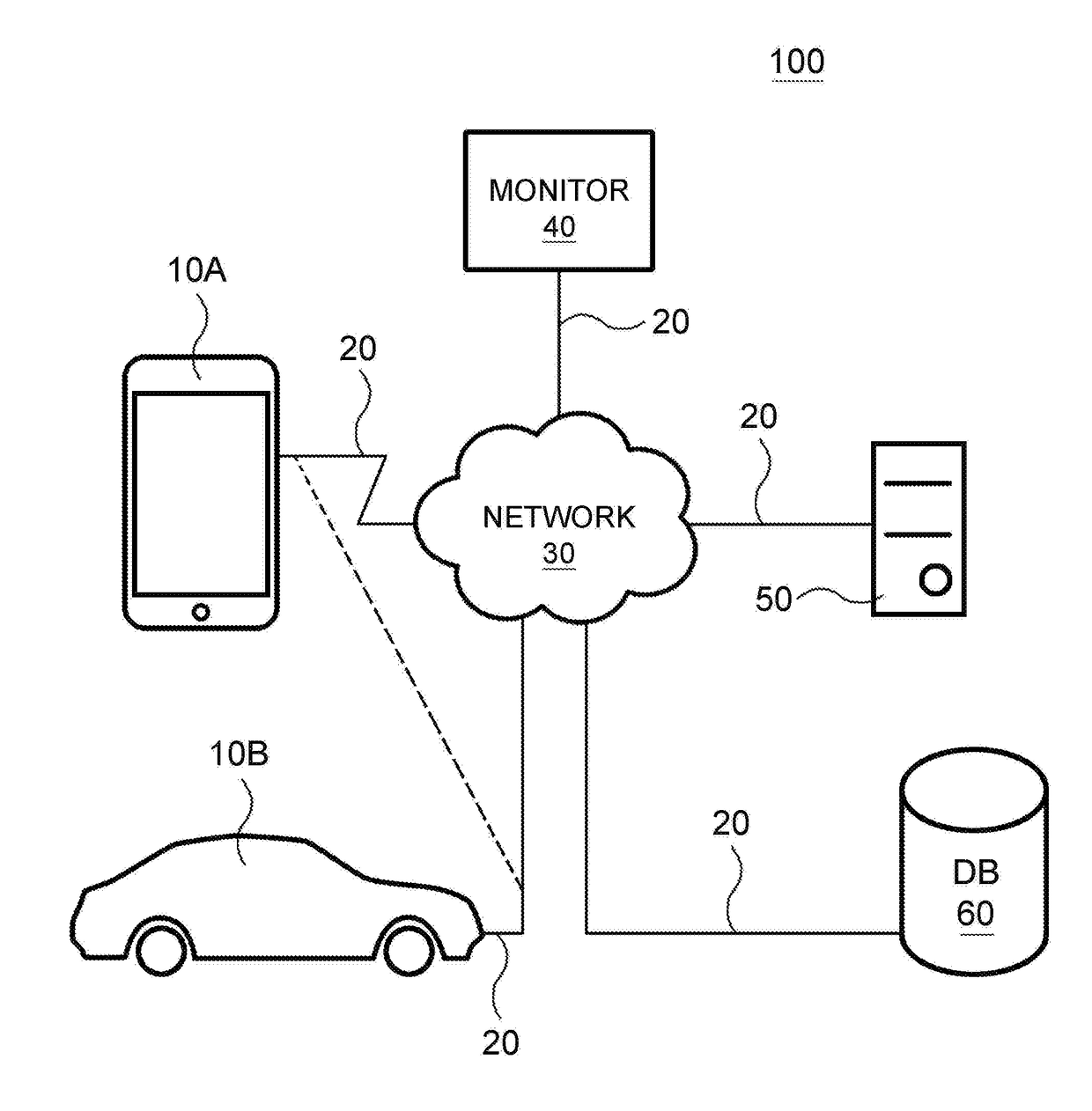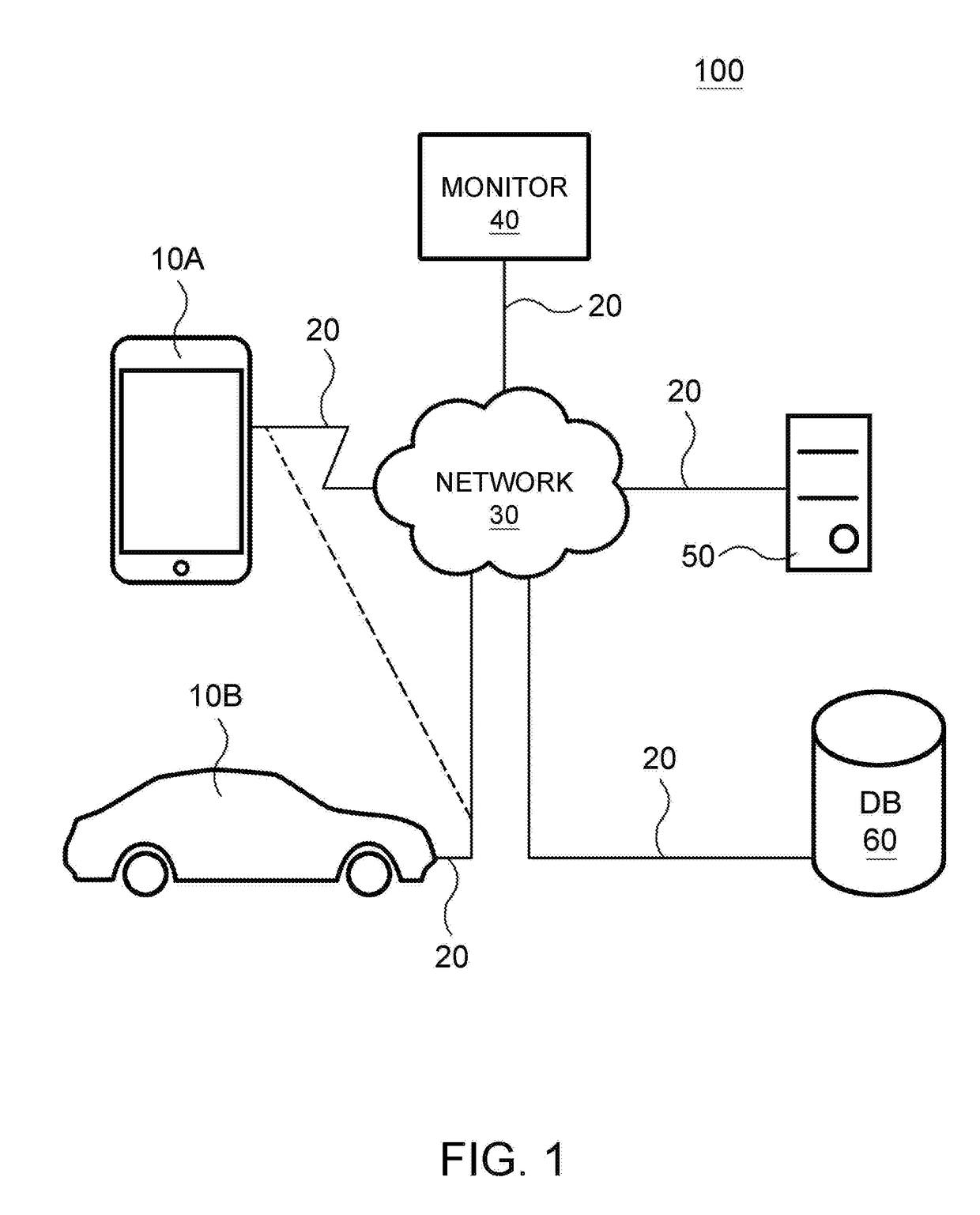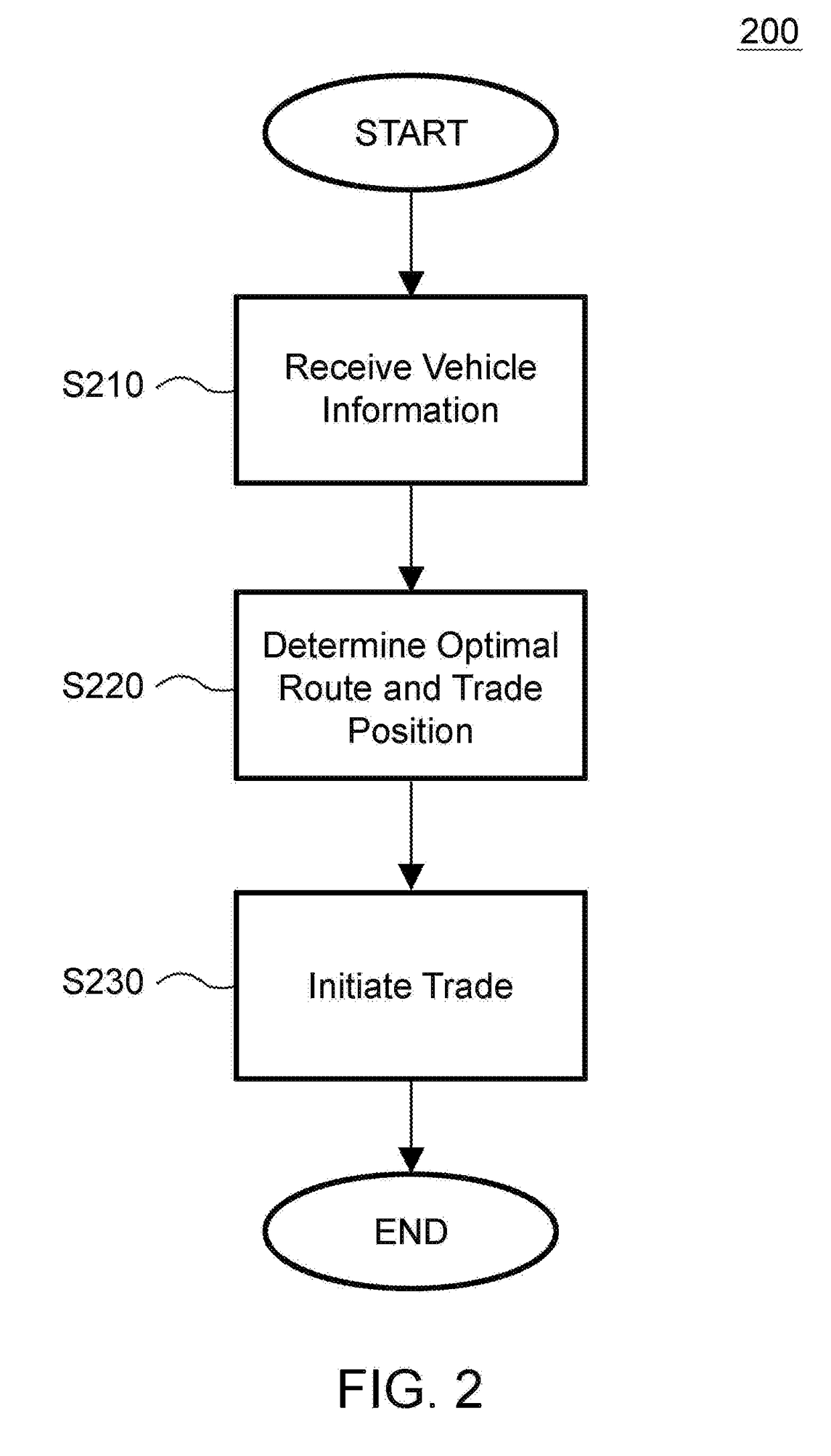Method and system for vehicle congestion pricing
a technology of congestion pricing and vehicle, applied in the direction of vehicle position/course/altitude control, process and machine control, instruments, etc., can solve the problems of network congestion, existing methods and systems still require active government oversight and involvement, slow to respond to changing conditions, and politically contentious
- Summary
- Abstract
- Description
- Claims
- Application Information
AI Technical Summary
Benefits of technology
Problems solved by technology
Method used
Image
Examples
example 1
[0074]WTA of veh2: no less than $5
WTP of veh1: no more than $8
Transaction costs: assume equal to zero for both vehs
Veh2 ‘indicator’ is 95 ‘merit stars’ (i.e. veh2 is to be treated ‘better’ by the system)
Veh1 ‘indicator’ is 25 ‘merit stars’
P=($5)+(($8)−($5))*(95 / (95+25))=($5)+($3)*(0.79)=$7.375
example 2
[0075]WTA of veh2: $5
WTP of veh1: $8
Transaction costs: assume equal to zero for both vehs
Veh2 ‘indicator’ is 25 ‘merit stars’
Veh1 ‘indicator’ is 95 ‘merit stars’ (i.e. veh1 is to be treated ‘better’ by the system)
P=($5)(($8)($5))*(25 / (95+25))=($5)+($3)*(0.21)=$5.625
[0076]In yet another embodiment of the present disclosure, a participating vehicle that is in close proximity with the other participating vehicle(s) may automatically (or manually) turn on the disclosed system or process upon detection of the proximity via, e.g., bluetooth, GPS sensor motion sensor, or other electronic or physical sensors. The participating vehicles may then set a willingness to pay in graphic user interface of, e.g., the local device 10A, the participating vehicle 10B, the monitor computer 40 of FIG. 1. Alternatively, the system may retrieve a particular user of the participating vehicle's willingness to pay from the database 60 where such information along with other information, such as, payment metho...
PUM
 Login to View More
Login to View More Abstract
Description
Claims
Application Information
 Login to View More
Login to View More - R&D
- Intellectual Property
- Life Sciences
- Materials
- Tech Scout
- Unparalleled Data Quality
- Higher Quality Content
- 60% Fewer Hallucinations
Browse by: Latest US Patents, China's latest patents, Technical Efficacy Thesaurus, Application Domain, Technology Topic, Popular Technical Reports.
© 2025 PatSnap. All rights reserved.Legal|Privacy policy|Modern Slavery Act Transparency Statement|Sitemap|About US| Contact US: help@patsnap.com



